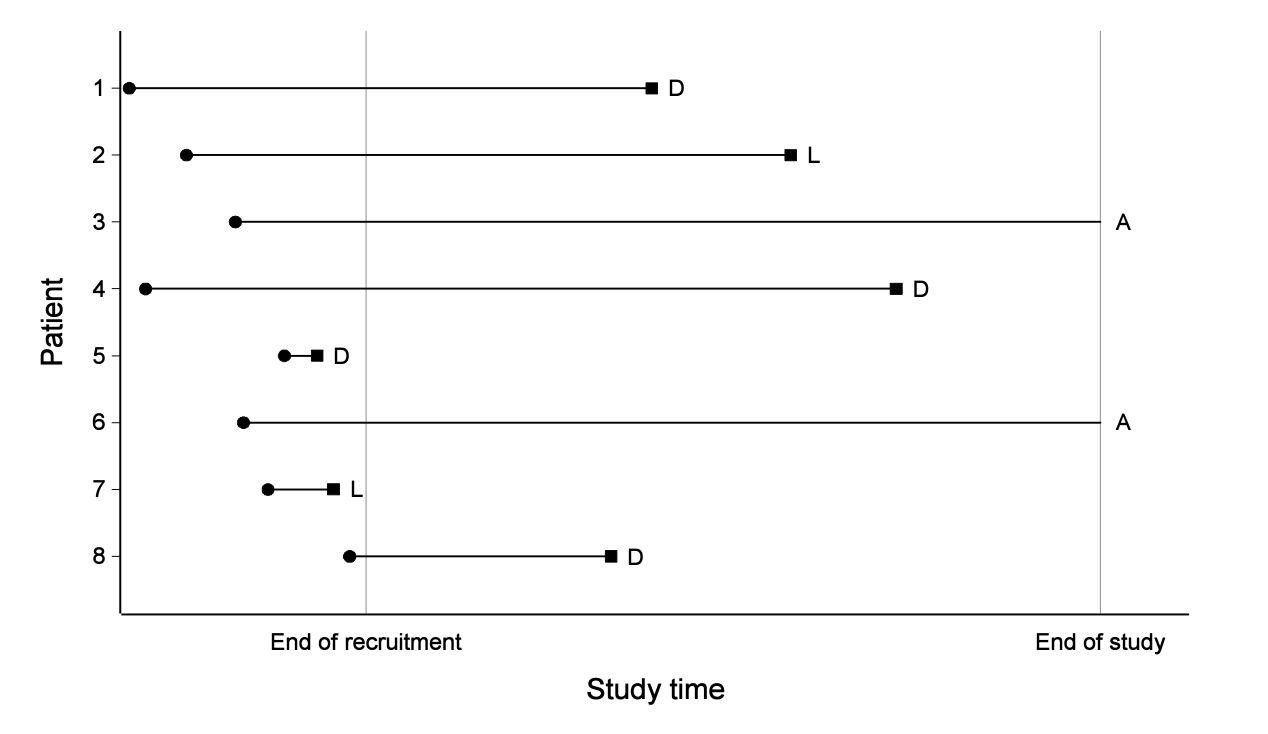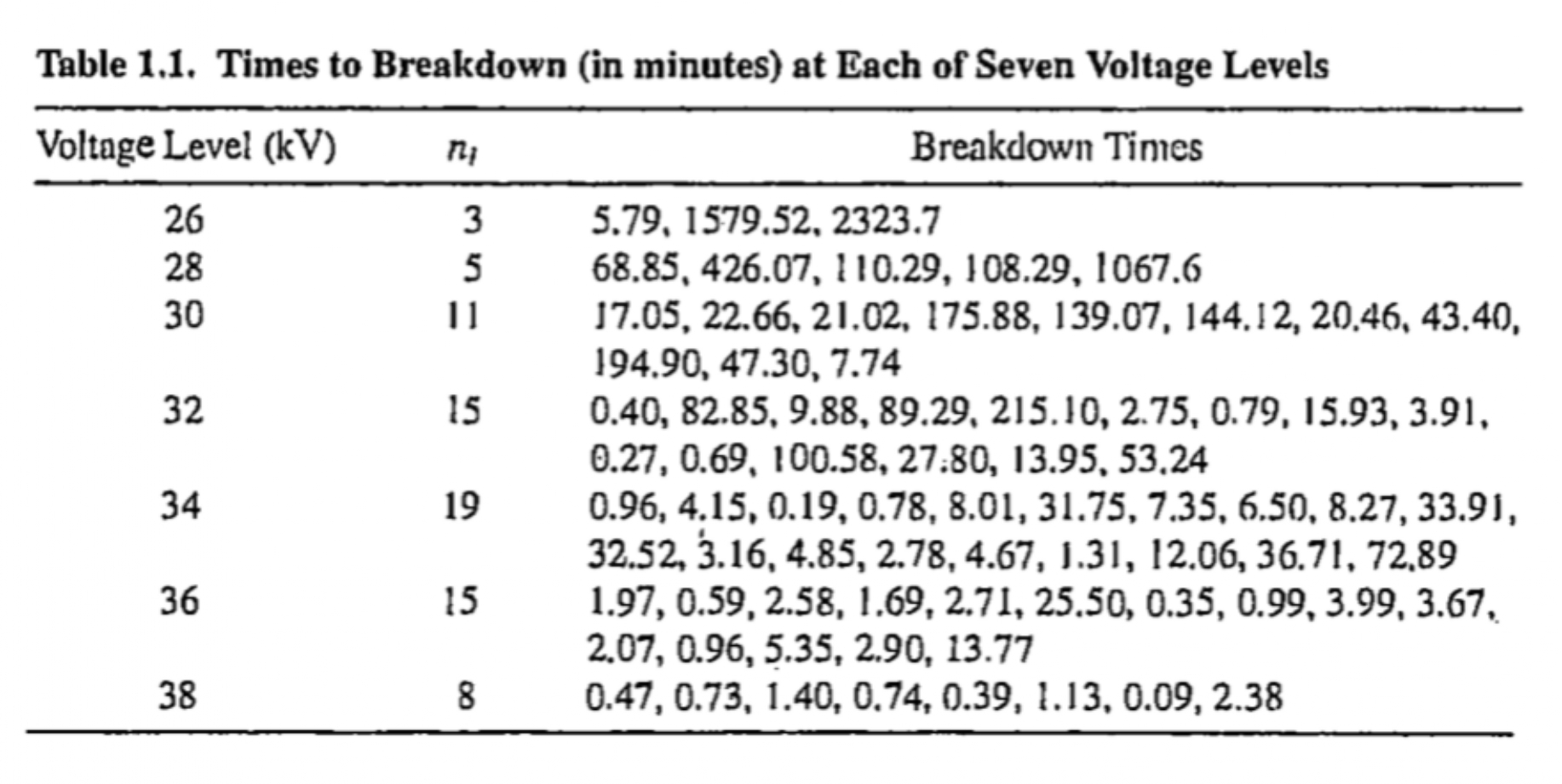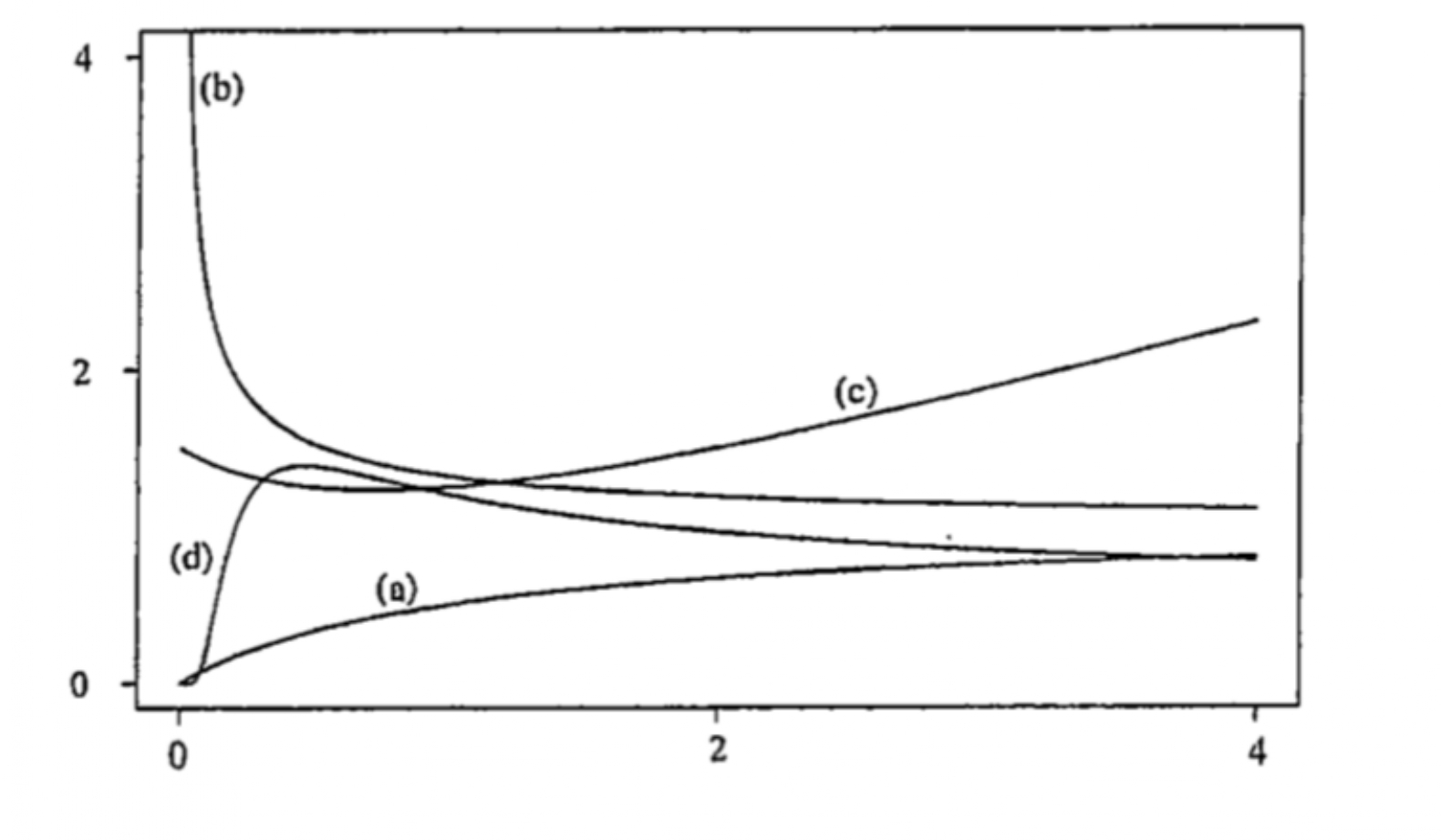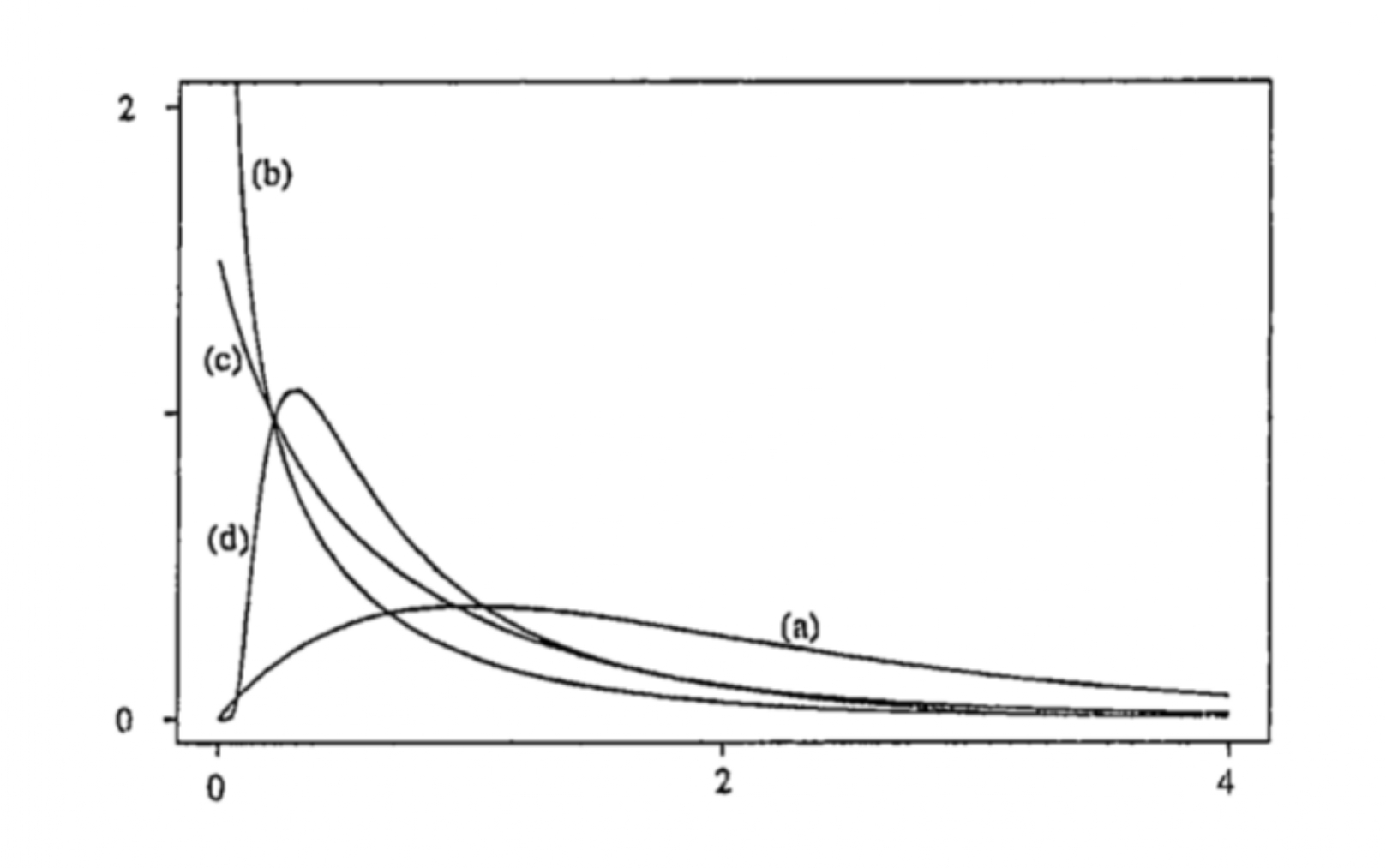
Chapter 1
(AST405) Lifetime data analysis
1 Basic Concepts and Models
1.1 Introduction
Introduction
Lifetime data have important use in many research areas, including health sciences, engineering, social sciences, etc.
Applications of lifetime distribution methodology range from investigation of the durability of manufactured items to studies of human disease and their treatment
Lifetime data are also referred as “survival time” or “failure time data”
Regression models and lifetables
- Some methods dealing with lifetime data are quite old, but the field expanded rapidly after 1970, specially after publishing of Sir David Cox’s famous paper (Cox 1972)

Number of citations: 62649 (Google Scholar, September 25, 2024)
Software packages for lifetime data analysis are widely available since 1980

Example 1.1.1
Manufactured items with mechanical or electronic components are often subjected to life tests in order to obtain information on their durability.
This involves putting items in operation, often in a laboratory setting, and observing them until they fail.
It is common here to refer to the lifetimes as “failure times,” since when an item ceases operating satisfactorily, it is said to have “failed.”
Example 1.1.2
Demographers and social scientists are interested in the duration of certain life “states” for humans.
Consider, for example, marriage and, in particular, the marriages formed during the year 1980 in a particular country.
Then the lifetime of a marriage would be its duration; a marriage may end due to annulment, divorce, or death.
Example 1.1.3
In medical studies dealing with potentially fatal diseases one is interested in the survival time of individuals with the disease, measured from the date of diagnosis or some other starting point.
For example, it is common to compare treatments for a disease in terms of the survival time distributions for patients receiving the different treatments.
Example 1.1.4
A standard experiment in the investigation of carcinogenic substances is one in which laboratory animals are subjected to doses of the substance and then observed to see if they develop tumors.
A main variable of interest is the time to appearance of a tumor, measured from when the dose is administered.
Time scale and time origin
The definition of lifetime includes a “time scale” and “time origin”, and also the specification of the event (e.g. failure or death) that determines the lifetime
Time scale is not always real or chronological time, e.g.
miles driven can be used as a time scale with motor vehicles
number of pages for a computer printer or a photocopier, etc.
Censoring
The chronological time needed to observe the lifetimes of all individuals in a study may be large enough that practical constraints prevent full observations
If an individual’s lifetime is only known to be exceed a certain value, then it is known as “censored” observation and the process is known as censoring
For example, if a life test is terminated after 28 days and one item had not failed by then, then we would only know that its lifetime is greater than 28 days and it is referred as “censoring time”
There are different types of censoring, e.g. right, left and interval censoring, which will be discussed in detail in the next chapter

Example 1.1.5
Nelson (1972) described the results of a life test experiment in which specimens of a type of electrical insulating fluid were subjected to a constant voltage stress.
The length of time until each specimen failed, or “broke down,” was observed.
The table in the next slide gives results for seven groups of specimens, tested at voltages ranging from 26 to 38 kilo-volts (kV).
Example 1.1.5

Example 1.1.5
The main purpose of the experiment was to investigate the distribution of “time to breakdown” for the insulating fluid and to relate this to the voltage level
- breakdown times tend to decrease as the voltage increases.
The experiment was run long enough to observe the failure of all the insulation specimens tested.
If a decision had been made in the preceding experiment to terminate testing after 180 minutes had elapsed, then two of the observations in the 26- and 28-kV sample and one each in the 30- and 32-kV samples would have been censored.
- In each case, we would not know the exact failure time of the item, but only that it exceeded 180 minutes.
Example 1.1.7
Gehan (1965) have discussed the results of a clinical trial, in which the drug 6-mercaptopurine (6-MP) was compared to a placebo with respect to the ability to maintain remission in acute leukemia patients.
Remission times for two groups of 21 patients each, one group given the placebo and the other the drug 6-MP are available.

1.2 Lifetime Distributions
Distribution function
Let
Let
Survivor function
The probability that an individual survives to time
In some context involving lifetimes of manufactured items,
The survivor function
A useful relationship
- The mean survival time is the area under the survivor curve
Quantiles
The
The
The 0.5 quantile
Mortality rate
In life table, the mortality rate at time
- Mortality rate is probability and it lies between 0 and 1
Calculating the mortality rate for ever smaller intervals of time results in the hazard function (also called hazard rate),
Hazard function
Hazard function
Hazard function
Hazard function is conditional failure rate not probability (so can take any positive value, i.e. between 0 to
For a mortality rate
The probability that an individual fails in
The
Hazard functions are sometimes given other names, such as conditional failure rate, hazard rate, force of mortality, etc.
Relationship between different functions
The functions
From a given expression of one function, say hazard function, expressions of other functions (e.g. density function) can be derived
Expressing
. . .
. . .
. . .
. . .
Note
Expressing
It is useful to define the cumulative hazard function as
Cumulative hazard function
Relationship between
For a given time
It is possible for the cumulative hazard function to exceed unity
The cumulative hazard is then greater than unity when the probability of an event occurring after time
Relationship between different functions
Expressing
Example 1.2.1
Suppose
- Obtain survivor function and hazard function of
- Obtain survivor function and hazard function of
Some remarks on hazard functions
The hazard function is an important characteristic of a lifetime distribution that indicates the way the risk of failure varies with age or time, and this is of interest in most applications.
In many instances, information is available on how failure rates change with time and such prior information about the shape of the hazard function can help guide model selection.
The model/information for hazard function can easily be translated for survivor and density functions using the formulas derived earlier
Different shapes of hazard functions
The shapes of hazard functions could be different, such as
monotone increasing (e.g. positive aging)
(a)monotone decreasing (e.g. negative aging)
(b)bathtub-shaped or U-shaped (e.g. age at death of human populations, lifetime of manufactured items, etc.)
(c)inverse bathtub-shaped (e.g. survival after treatment for cancer, duration of marriage, etc.)
(d)
Different shapes of hazard functions

Different shapes of density functions

Some remarks on hazard functions
Shapes of density function could be different corresponding to the shapes of hazard functions
Although different survivor functions can have the same basic shape, their hazard functions can differ dramatically
The hazard function is usually more informative about the underlying mechanism of failure than the survivor function.
Modelling the hazard function is an important method for summarizing survival data
1.3 Some important failure time models
Introduction
Various parametric families of models are used in the analysis of lifetime data and a few distributions have the usefulness in a wide-range of situations
The most commonly used univariate distributions for failure time data
- exponential, Weibull, log-normal, and log-logistic
Notations
The exponential distribution
The exponential distribution is characterized by a constant hazard function
The cumulative hazard function
The survivor function
The probability distribution function
Reprametrization
Properties
Quantiles, the
- The median,
- The median,
The exponential distribution with
If
The mean and variance of
The median of the
The density function of
Historically, the exponential was the first widely discussed lifetime distribution model
- This was in part because of the availability of simple statistical methods for it
The assumption of a constant hazard function is very restrictive, so the model’s applicability is fairly limited
The Weibull distribution
The Weibull distribution is the most widely used lifetime distribution model.
It has applications to the lifetimes or durability of manufactured
- It is used as a model with diverse types of items, such as ball bearings, automobile components, and electrical insulation.
It is also used in biological and medical applications, for example, in studies on the time to the occurrence of tumors in human populations or in laboratory animals.
The hazard function of Weibull distribution
Show that
monotone increasing for
monotone deccreasing for
constant for
Exponential distribution is a special case
- For
- For

The cumulative hazard function
The survivor function
The density function


Show that the
- Obtain the expressions of
- Obtain the expressions of
The
The shape of the distribution depends on
It can be shown that
- i.e.
- i.e.
The extreme value distribution
Let
Extreme value distribution (also known as Gumbel distribution) is closely related to Weibull distribution
If lifetime
Extreme value distribution has two parameters, which have one-to-one connection with the Weibull distribution parameters!
The pdf of
Exercise: obtain the pdf of
- Hints.
- Hints.
The survivor function
The cumulative hazard function
The hazard function
Standard extreme value distribution
- If


- The moment generating function of
- Let
- Let
- Let
If
If
Moments of standard extreme value distribution
For
The
- Show that the location parameter
The log-normal distribution
The lifetime
The parameters of normal distribution
- Let
The survivor function of
The hazard function is defined as
It can be shown
For log-normal distribution
Show that for


The Log-logistic distribution
If
The p.d.f. of a logistic distribution with parameters
The survivor function of a logistic distribution
The hazard function of logistic distribution
The p.d.f. of log-logistic distribution
The survivor function of
- Let
- Let
The p.d.f.
The survivor function
The hazard function


- Show that for
- Beta distribution of the first kind
- Beta distribution of the second kind
The logistic and normal distribution have similar shapes
For
For
The gamma distribution
- The gamma distribution has a pdf of the form
- For
- Incomplete gamma function
Survivor function
- Let
- Let
The hazard function
For
The distribution with
If
- Hints.
- Hints.
If
Let
The moment generating function of


Log-Location-scale models
Definition: Location Scale Family A location-scale family is a family of distributions formed by translation and rescaling of a standard family member.
A parametric location-scale model for a random variable
The cumulative density function of
Similarly, the survivor function of
The distribution of the standardized variable
Probability density function of
Survivor function of
Cumulative density function of
- There is an one-to-one correspondence between some lifetime and log-lifetime distributions
Parameters of lifetime distributions
Parameters of log-lifetime distributions
For the standardized log-lifetimes
The density, cumulative density, and survivor functions can be expressed in terms of
For example, the survivor functions of log-lifetimes are defined as
Using the transformation
Obtain the survivor function of
Similarly, obtain the expressions of survivor function of log-logistic and log-normal distribution using the relationship
1.4 Regression models
Regression models
Regression models are used to understand the relationship between lifetime and a set of covariates (e.g. age, gender, disease status, values of bio-markers, etc.), some of which may depend on time
Regression models considered for lifetimes can be divided into two broad categories
parametric models
semiparametric models
Parametric regression models
Parametric models discussed in this chapter (e.g. Weibull, log-logistic, etc.) can be considered for modeling lifetime
In parametric regression model, one of the parameters of the assumed lifetime distribution is expressed as a function of available covariates
Let
Assume
The model specification
For the given set of covariates
If
The corresponding survivor function has the form
- For example, if
- For example, if
Semiparametric regression models
In semiparametric regression model, the dependence of
For lifetime data, the most famous semiparametric regression mode is Cox’s proportional hazards model (Cox 1972)
Cox’s model cosiders the hazard function of
Time-dependent covariates can be included in Cox’s proportional hazards model
Exercises
- Obtain graphs of probability density, survivor, and cumulative hazard functions of the following distributions using R codes.
Weibull distribution with (i) scale parameter 10, and shape parameter 1.5 and (ii) scale parameter 10, and shape parameter 0.95
Logistic distribution with (i) location parameter 10 and scale parameter 1.5 and (ii) location parameter 10 and scale parameter 0.75
Acknowledgements
This lecture is adapted from materials created by Mahbub Latif